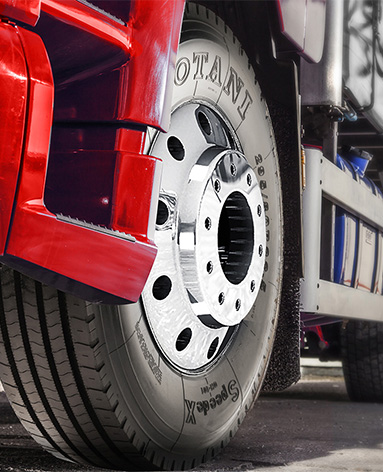12 月 . 04, 2024 09:51 Back to list
rear brake drum assembly
Understanding the Rear Brake Drum Assembly A Key Component of Vehicle Safety
The rear brake drum assembly is a crucial part of vehicle braking systems, contributing significantly to the overall safety and performance of automobiles. As cars travel at various speeds, it becomes essential to understand how rear brake drums work, their components, and their maintenance needs. This article will explore the design, function, and importance of rear brake drum assemblies, along with practical insights for vehicle owners.
What is a Rear Brake Drum Assembly?
A rear brake drum assembly is part of the drum brake system, which comprises several components that work together to create friction, thereby slowing down or stopping a vehicle. The primary parts include the brake drum, brake shoes, wheel cylinder, and various springs and retaining clips. When the brake pedal is pressed, hydraulic fluid from the brake master cylinder travels to the wheel cylinder, pushing the brake shoes against the inner surface of the spinning brake drum. This friction converts kinetic energy into heat, slowing the vehicle.
Components of the Rear Brake Drum Assembly
1. Brake Drum The drum is a cylindrical component that rotates with the wheel. It’s usually made of cast iron or aluminum, designed to withstand high temperatures and friction caused by the brake shoes.
2. Brake Shoes These are curved pieces of metal that are lined with friction material. When hydraulic pressure is applied, the shoes expand outward against the drum, creating the necessary friction to slow the vehicle.
3. Wheel Cylinder This component houses pistons that move outward when hydraulic pressure is applied, pushing the brake shoes against the drum.
4. Springs Various springs are used in the assembly to return the brake shoes to their resting position when the brake is released. Additionally, they help to keep the shoes properly positioned within the drum.
5. Retaining Clips These are used to secure various components of the brake assembly, ensuring they remain in place during operation.
The Functioning of Rear Brake Drum Assembly
rear brake drum assembly

When a driver presses the brake pedal, hydraulic fluid is forced into the wheel cylinder, moving the pistons outward. This action causes the brake shoes to expand against the brake drum. The friction generated between the shoes and the drum provides the necessary stopping power. Once the driver releases the brake pedal, the springs retract the shoes, allowing the drum to spin freely.
Brakes are designed to endure significant stress and heat. As such, the materials used in the rear brake drum assembly are engineered to maintain performance under extreme conditions. Regular wear and tear can affect their efficiency, making maintenance critical for safety.
Maintenance of Rear Brake Drum Assembly
Proper maintenance can enhance the longevity and performance of the rear brake drum assembly. Here are some essential maintenance tips for vehicle owners
1. Regular Inspections It is advisable to have the brake system inspected regularly by a qualified technician. They can assess the condition of the drum, shoes, and other components for wear and damage.
2. Replace Worn Components If any components of the brake drum assembly, such as the brake shoes or drum itself, show signs of wear, they should be replaced promptly to ensure optimal braking performance.
3. Adjusting Brake Shoes Over time, brake shoes may wear unevenly. It is crucial to adjust them properly to maintain effective contact with the drum.
4. Cleaning Dirt and debris can accumulate on the brake components, leading to reduced performance. Regular cleaning of the brake parts can help maintain efficiency.
5. Fluid Checks Ensure that the brake fluid levels are adequate and that the fluid is clean. Contaminated fluid can adversely affect the hydraulic system's performance.
Conclusion
The rear brake drum assembly is a vital component of any vehicle’s braking system. Understanding how it works and maintaining it properly can ensure that a vehicle stops effectively, enhancing safety for drivers and passengers alike. Regular inspections and maintenance are key to preventing brake failure, leading to a smoother and safer driving experience. By prioritizing the health of your rear brake drum assembly, you invest in your vehicle's longevity, reliability, and your own safety on the road.
-
Brake Drum for Kamaz Trucks Durable OEM Replacement & High Performance
NewsMay.30,2025
-
Brake Drum Man High-Quality Drum Brake & Shoe Solutions
NewsMay.30,2025
-
High-Performance Brake Drum for Kamaz Trucks Durable Drum Brake Components
NewsMay.29,2025
-
Brake Drum Man High-Quality Drum Brake Drums & Brake Shoes
NewsMay.29,2025
-
Brake Drum MAZ High-Performance & Durable Replacement Parts
NewsMay.29,2025
-
heavy truck brake drums
NewsMar.07,2025
